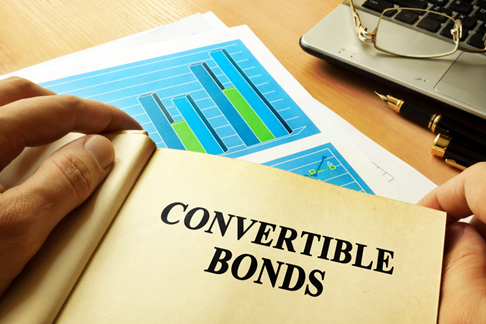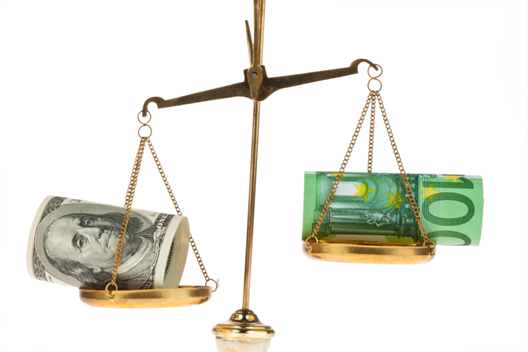What is parity price?
Parity price can be defined as the product's price being adjusted following the cost of the inputs used in the production. In other words, parity price can also be defined as when the price of one asset is directly proportional to the price of another asset.
The theory of parity price is mostly applied for both securities and commodities. It indicates the equal value of both the assets. In addition, parity price can be used for convertible assets such as convertible bonds to analyse when the ideal time is to convert a bond into shares of common stock.
The concept of parity price is also often used for comparing values or prices of different assets. For example, the average price of a commodity over the preceding ten years is generally established as the parity price.
Summary
- Parity price refers to the situation in which the price of an asset is dependent on the price of another asset.
- Parity price theory works best in the case of convertible assets.
- Parity price is very useful for investors as it helps them to compare the prices of assets.
Frequently Asked Questions (FAQ)
How do convertible bonds work?
An interesting feature about the convertible bond is that it allows the investors to convert into a fixed number of shares at a common stock at a particular price per share. Therefore, it is easier for investors to purchase convertible bonds because the investment remains fixed, while the earning can vary depending upon the conversion of the company's equity. Parity price can be referred to as the convertible security's market price divided by the conversion ratio.

Image source: © Designer491 | Megapixl.com
How is parity price important for commodities?
In the case of agricultural commodities, the purchasing power is the parity price of a product. The purchasing power of a commodity depends upon the farmer's expenses such as wages, loan of interest and equipment. Purchasing power can be defined as the value of a currency comparing it with the number of commodities that can be bought with a single unit of it.
The Agricultural Adjustment Act of 1938 clearly states that the parity price in agricultural commodities is the average price paid by farmers for a commodity during the past 10 years. In case the parity price is found lower than the market price, the government may offer price support in that case through direct purchase.
What is parity in purchasing power?
Parity in purchasing power (PPP) refers to the method of comparing purchasing power among various counties. Parity in purchasing power is carried out by comparing the price of many commodities in one country with that in the other county. However, the exchange rates of different countries are adjusted while doing parity in purchasing power. Therefore, it can be simply said that the prices in both countries should be the same after figuring out the exchange rate.
Let us study an example to develop an understanding of this concept.
For example, the price of a MacBook in the US is US$600, and the exchange rate of the US dollar is US$1.36, i.e., it costs US$0.74 for every Australian dollar. Therefore, the cost of a MacBook in Australia should be somewhere around AU$813, and there would be parity in purchasing power. This happens because AU$813 is equal to US$600. However, parity in purchasing power fails to occur if the price of the Macbook rises or drops from AU$813.
How is the theory of parity utilised in the foreign exchange market?
Applying the theory of parity is also very prevalent in the foreign exchange market and forex trading. The different currencies are on parity when there is an exact one-to-one relationship with the exchange rate. Let us study an example to understand the application of parity in forex trading.

Source: © Ginasanders | Megapixl.com
Let us assume that a US-based company wants to trade with a company based in Australia. Therefore, to carry out the trade, the US-based company converts currency from the US dollar to the Australian dollar and sends them to the Australian company to fund its operations. In that situation, if the exchange rate results in US$1 to AU$1, then parity takes place.
What are some other applications of the parity price theory?
- The application of parity price in stock options.
The application of parity price can be widely utilised during stock options. When an investor buys a stock option, the owner lawfully has the right to purchase a particular number of shares at a specific share price. Moreover, the right to buy these shares at a specific price end on a particular date. For example, let us assume that one AU$50 Microsoft call option signifies that the owner is given the right to purchase 100 common shares of Microsoft at AU$50 per share before the option dies. Now, if the market price of Microsoft shares is AU$60, then the difference is AU$10, Now we can call the trade parity if the price of a stock option is AU$10.
- The application of parity price in risk parity
Risk parity refers to the process of asset management that determines the risk based on asset classes instead of capital allocation. For example, the customary asset allocation strategy divides assets into several categories: stocks, bonds, and cash. This classification aims to ensure the diversification of investment and reduce risk by investing in different types of assets. However, on the other hand, risk parity classifies assets into four categories, namely, equities, credit, interest rates, and commodities.
Why is parity price significant?
Parity is a concept that can be used while comparing two commodities of the relatively same value. This concept is very useful for investors as they need to compare the prices of assets before making investment decisions. Therefore, parity price can be applied while comparing securities of the same value, such as convertible bonds. This enables the investor to know when to convert a bond into common stock to gain maximum profit. In addition, the parity price also helps an investor to determine stock options value.
 Please wait processing your request...
Please wait processing your request...